How to Learn Japanese (with LingQ)
According to the US Department of State, it takes 2200 hours of learning Japanese to become fluent. With that in mind, it’s critical that you enjoy the process of learning and stay motivated.
Thanks to the Internet (and apps like LingQ), learning Japanese has never been easier. Not only do these pieces of technology allow you to access an infinite amount of Japanese content, they also allow you to learn the language on your own, without enrolling in expensive courses or moving abroad.
In this post, I’ll walk you through a step-by-step guide to learning Japanese on your own. How to start, resource recommendations, and how LingQ enables you to learn from content you love.
How to Learn Japanese: Beginner Stage
Learn the Japanese Writing System
In Japanese, there are three different writing systems. In order to progress in the language, you’ll need to be able to read. The first two writing systems that you’ll learn, hiragana and katakana, are relatively easy. Each system consists of 46 characters and it should take a week or two for you to be able to recognize each one.
Using LingQ, check out the Absolute Beginner Japanese course. It will introduce you to all 46 characters and teach you the stroke order for each one.
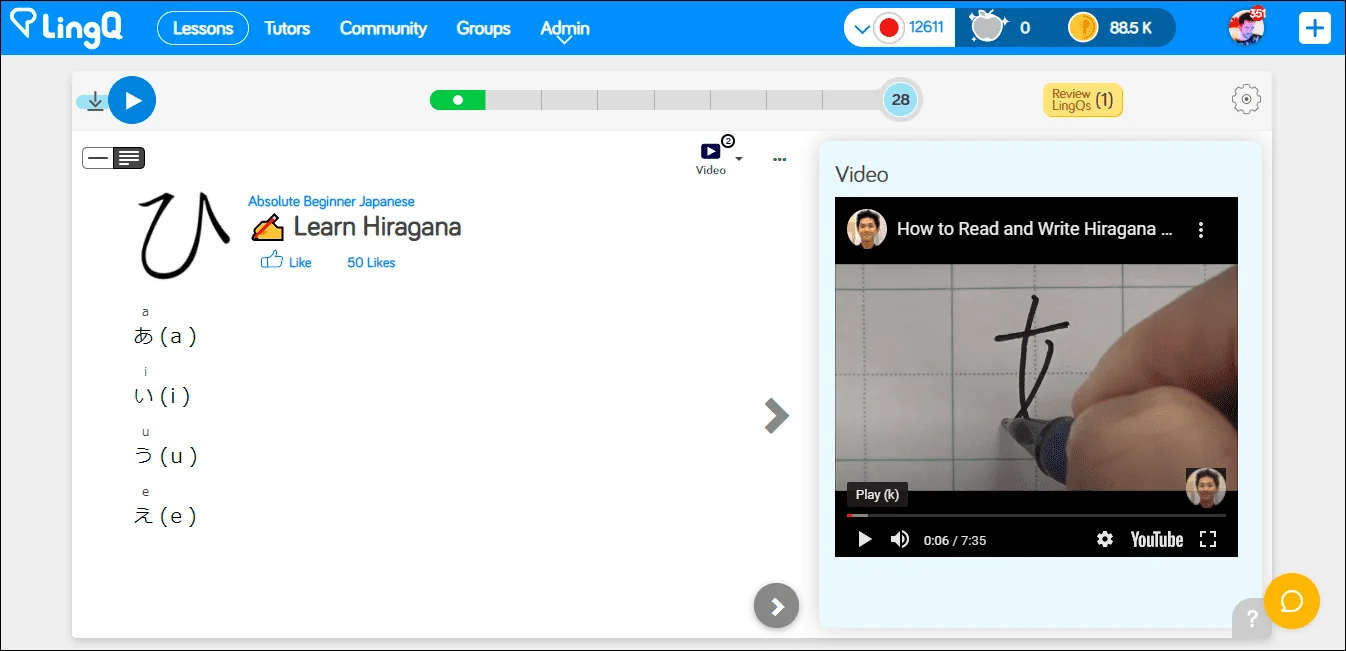
Next is kanji. There are over 4000 kanji characters in the Japanese language. This doesn’t mean you’ll have to learn all of them before you start reading. A popular resource for learning kanji is Remembering the Kanji by Heisig and for that matter, Remembering the Hiragana.
What I did after learning hiragana and katakana was start reading the LingQ Mini-Stories (found in LingQ’s guided courses). These stories introduce common kanji and will ease you into the language.

 One thing I’d like to mention is that you do not need to know how to write Japanese characters by hand. Having lived in Japan before, I can assure you that almost everything is done digitally.
One thing I’d like to mention is that you do not need to know how to write Japanese characters by hand. Having lived in Japan before, I can assure you that almost everything is done digitally.
LingQ Japanese Mini-Stories
The Japanese Mini-Stories consist of 60 lessons. That’s more than most textbooks. Best of all, there’s no fluff. The lessons are 100% in Japanese.
What makes the Mini-Stories so great is that they use lots of repetition and allow you to get an understanding of the basic patterns of the Japanese language.
In order to grow your vocabulary, read through the Mini-Stories and create as many LingQs as possible. In other words, turn all the blue words to yellow words by selecting them and saving their definitions. When you fully comprehend a yellow word, select the word and turn it into a known word.
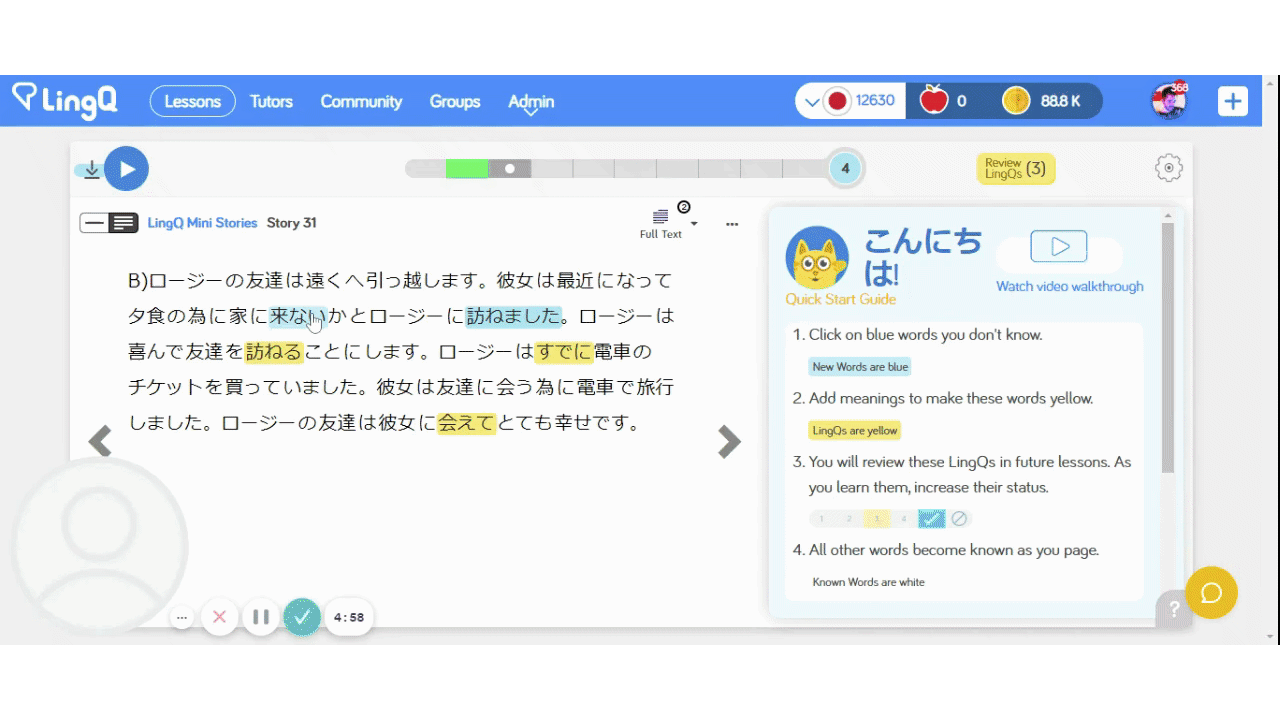
The more reading you do and the more LingQs you create, the more vocabulary you’ll learn.
I suggest going through at least one Japanese Mini-Story, each day. Read it once, then listen to the dialogue. Once you’ve completed all 60 lessons, you’ll notice a major improvement in your Japanese comprehension.

Other Guided Courses
Besides the LingQs Mini-Stories, there’s Eating Out, Who is She, Penpals, and dozens more guided courses. You’ll have enough content to last you several months.
Once again, go through the lessons you enjoy, creating as many LingQs as possible
.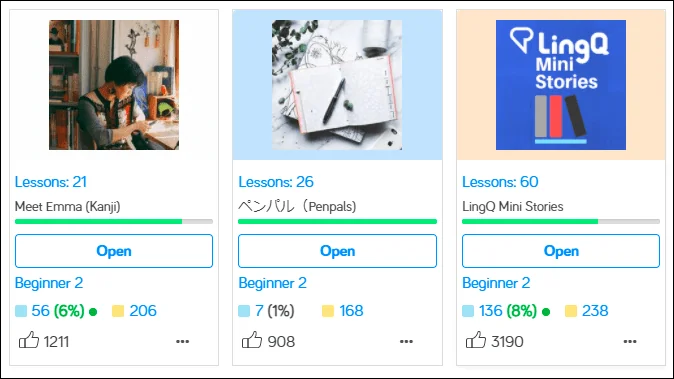
How to Learn Japanese: Intermediate Stage
Learn from Content You Love
After around the three-month mark, I recommend diving into native content outside of the guided courses. This can include anime, movies, music, blogs, and so on. Whatever interests you and keeps you motivated.
Best of all, you can import this type of content into LingQ and build your own personal library allowing you to stay organized, and consume Japanese wherever you go.
Here’s what my LingQ lesson feed looks like. As you can see, it’s full of YouTube videos, podcasts, and novels. The amount of content you can learn Japanese from is endless.
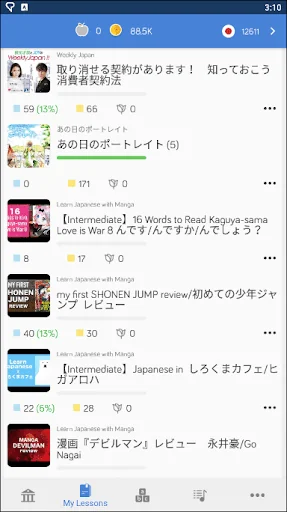
If you’re wondering where I find my resources to import into LingQ, I’ve made a list below. Please note, I recommend going over our post, The Complete Guide to Importing on LingQ, first.
Anime
Anime is a great way to learn Japanese. Sure, there are some naysayers out there who think that by doing so, you’ll talk like Pikachu, but that’s not true. There are tons of great series to choose from.
I recommend starting with Shirokuma Cafe and Usagi Drop. They’re both very easy to follow and will help you pick up basic everyday phrases.
For more recommendations, check out the post Learn Japanese with anime and LingQ and learn how to import anime from sites such as Animelon, Anjsub, Anisub, Netflix, and YouTube.
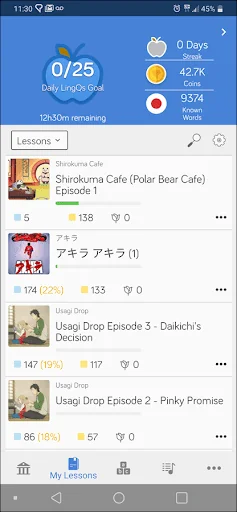
Netflix
Import your favourite Japanese Netflix series into LingQ and build your library. Similar to the popular extension, Language Learning with Netflix, LingQ lets you look up new words and phrases.
Also, you can review new words using LingQ’s SRS tool, export to Anki, and much more. Find out more by reading our post, Language Learning with Netflix and LingQ.
Japanese YouTubers
Since people all over the world are spending more time at home, there’s been an explosion of new YouTubers sharing new content. The best Japanese YouTube videos come with manually created closed captions. Unlike YouTube’s auto-generated closed captions, these are accurate and written by native Japanese speakers. Importing these videos into LingQ is a breeze.
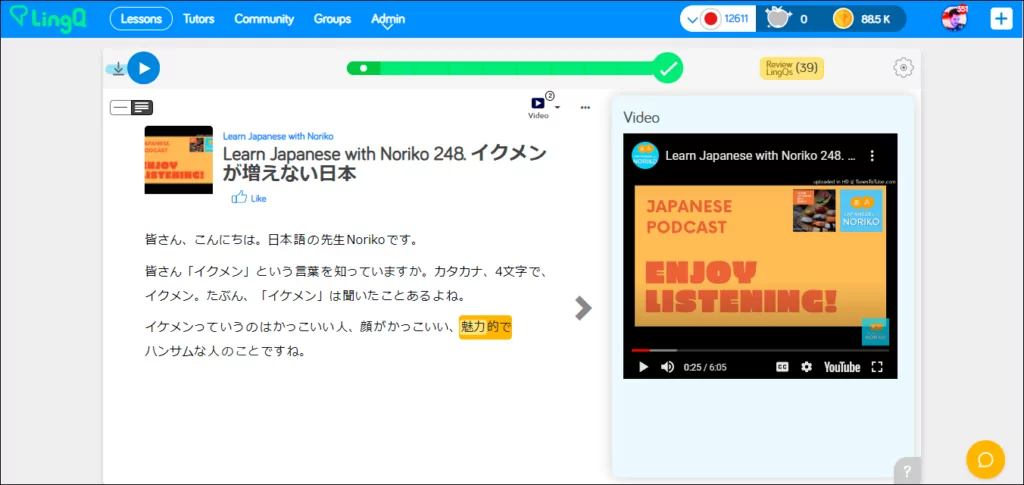
Check out my top Japanese YouTube channels to import into LingQ.
Japanese Dramas
Watching Japanese dramas is one of the best ways to practice your listening skills and to up your vocabulary. It will absolutely help your non-native ears become used to the natural rhythm and pitch of Japanese. One site I recommend is Viki. The great thing about this site is that the dramas come with subtitles, which can be imported into LingQ.
If you’re looking for drama recommendations, check out our post, 5 Japanese Dramas That Will Improve Your Language Skills.
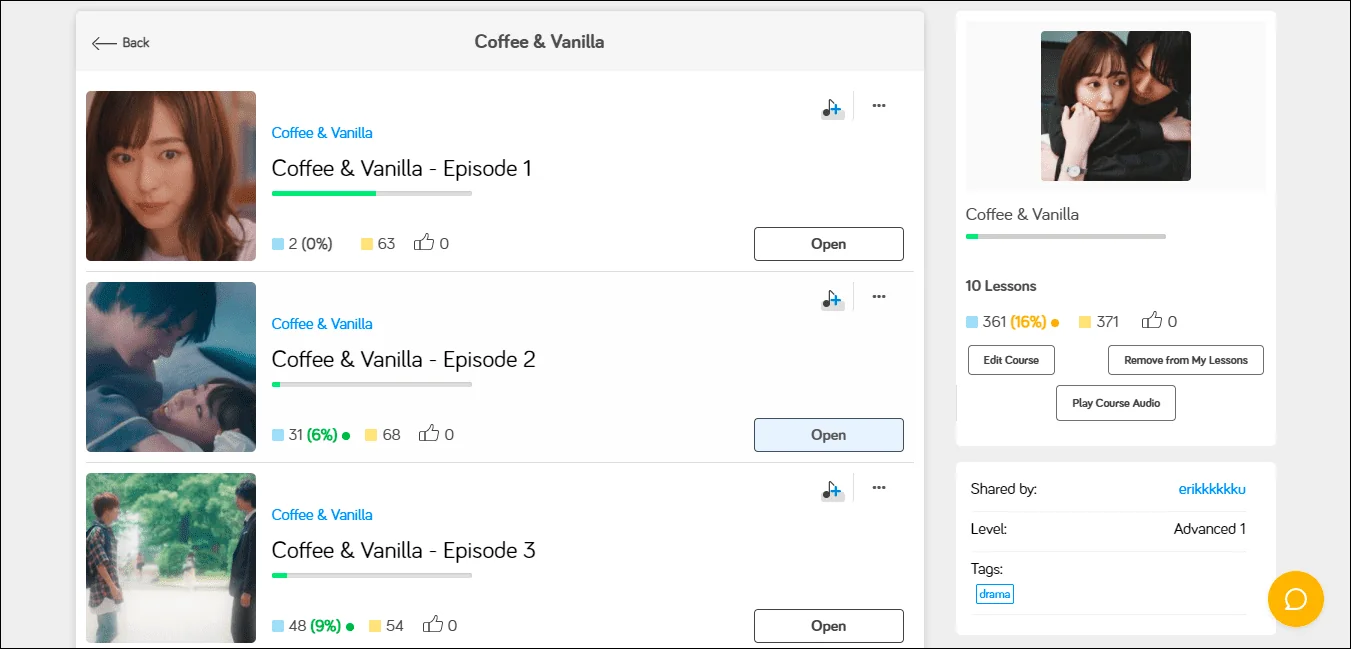
Bonus Recommendations
Last but not least, I’d like to share 60 resources I’ve used to help me improve my Japanese. These range from YouTube channels, podcasts, blogs, and much more. These resources come with audio and transcripts as well and can easily be imported into LingQ.
Enjoyed this post? Check out polyglot and LingQ cofounder Steve Kaufmann’s YouTube video for some tips for learning Japanese!
That’s it! By following these steps, I guarantee that you’ll make a breakthrough in your Japanese language learning. Good luck!


